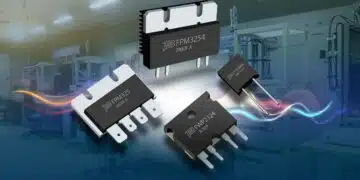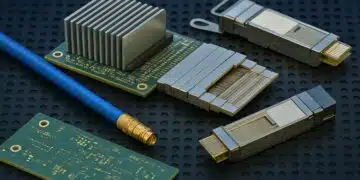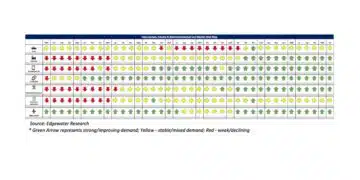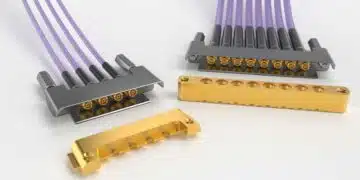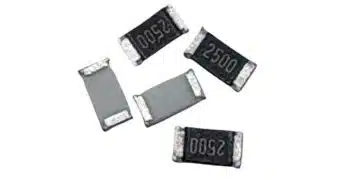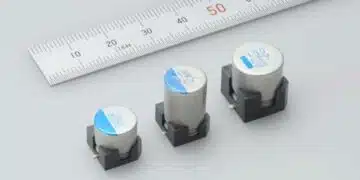Source: InCompliance Mag article
by Bogdan Adamczyk and Jim Teune in EMC Concepts Explained.
This article investigates the impedance of the three standard passive circuit components (R, L, and C) as well as the frequency response of a PCB trace. It is shown that a PCB trace can be modeled as a resonant RLC network just like the standard components and effectively constitutes the fourth circuit component whose frequency behavior directly effects the impedance of the resistors, inductors, and capacitors on a PCB.
1. Component Models and Simulations
Actual circuit components exhibit non ideal effects that can be modeled by augmenting the ideal model with a parasitic resistance, inductance and capacitance. The parasitics for the three standard components (R, L, and C) considered in this section come from the component itself and not from the connecting traces. The parasitics associated with a PCB trace considered in this section come from the trace itself and not from the other circuit components.
1.1 Resistor
Circuit model and the impedance vs. frequency curve (straight-line approximation) for a resistor and its parasitics (with no traces attached) are shown in Figure 1 [1].

The parasitic inductance and capacitance in Figure 1 are inherent to the component itself and the fabrication method, and are not attributed to the connecting traces. Figure 2 shows the simulation results for a 300-Ω surface mount resistor together with its realistic parasistics (simulation is run between 1 MHz and 1 GHz).

1.2 Inductor
Circuit model and the impedance vs. frequency curve for an inductor with its parasitics (with no traces attached) are shown in Figure 3.

Figure 4 shows the simulation results for a 220-nH inductor together with its realistic parasistics.

The self-resonant frequency of the inductor is 638.2 MHz – this result will be confirmed in the measurement section.
1.3 Capacitor
Circuit model and the impedance vs. frequency curve for a capacitor with its parasitics (with no traces attached) are shown in Figure 5 [2].

Figure 6 shows the simulation results for a 120-pF capacitor together with its realistic parasistics.

The self-resonant frequency of the capacitor is 995.2 MHz – this result will be confirmed in the measurement section.
1.4 PCB Trace
Figure 7 shows the circuit models and the impedance curves for two PCB traces of length 0.75 and 2.5 inches, respectively.

Comparison of these curves with the one in Figure 4 reveals that an unpopulated PCB trace acts as an inductor! The longer trace has larger inductance and hence its self resonant frequency is lower than that of the shorter trace.
These are two very important observations since in any practical circuit, the standard three passive components (R, L, and C) will be connected to other components with PCB traces. These traces will act as the fourth circuit component whose impact will depend on its trace length. The measurement section will illustrate this impact.
2. Impedance Measurements
The experimental boards used for impedance measurements are shown in Figure 8 [3].

The measurement setup is shown in Figure 9.

2.1 PCB Trace
Figure 10 shows the impedance measurement of two unpopulated PCB traces of length 0.75, and 2.5 inches, respectively.

Note that the results in Figure 10 are consistent with the simulation results in Figure 7. The short trace resonates at 1 GHZ while the long one resonates at a frequency of 559.8 MHz. This behavior is the direct consequence of the increase in the trace inductance.
2.2 Resistor
Figure 11 shows the impedance measurement of a 300-Ω resistor with no connecting traces and with the PCB traces of length 0.75, and 2.5 inches, respectively. (Resistor used is Stackpole Electronics, Inc. RMCF0805JT300R).

Note that the result in Figure 11a is consistent with the simulation result in Figure 2. When the resistor is attached with a short PCB trace, the 3-dB point moves from the GHz range to the frequency of 835 MHz. As the trace length increases, this point moves to the left (522 MHz), which is the direct consequence of the increase in the trace inductance.
2.3 Inductor
Figure 12 shows the impedance measurement of a 220-nH inductor with no connecting traces and with the PCB traces of length 0.75, and 2.5 inches, respectively. (Inductor used is Murata, LQG18HHR22J00).

Note that the result in Figure 12a is consistent with the simulation result in Figure 4. When the inductor is attached with a short PCB trace, the self resonant frequency point moves from 638.2 MHz to 559.5 MHz. As the trace length increases, this frequency shifts to the left, to 278.6 MHz, which is the direct consequence of the increase in the trace inductance.
What is noteworthy here is the fact that the inductor connected with a short trace resonates at the same frequency as the unpopulated long PCB trace itself! This result supports the simulation conclusion in Section 1.4: an unpopulated PCB trace acts as an inductor!
2.4 Capacitor
Figure 13 shows the impedance measurement of a 120-pF capacitor with no connecting traces and with the PCB traces of length 0.75, and 2.5 inches, respectively. (Capacitor used is Murata, CGM1885C1H121JA16).

Note that the result in Figure 13a is consistent with the simulation result in Figure 6. When the capacitor is attached with a short PCB trace, the self resonant frequency point moves from 993.2 MHz to 612.4 MHz. As the trace length increases, this frequency shifts to the left, to 117.5 MHz, which is the direct consequence of the increase in the trace inductance. Additionally, an anti-resonance point is present at 901.5 MHz frequency.
References
- Bogdan Adamczyk, Foundations of Electromagnetic Compatibility with Practical Applications, Wiley, 2017.
- Adamczyk, B., Teune, J., “Impact of a Trace Length on Capacitor Frequency Response,” In Compliance Magazine, March 2018.
- Bill Spence and Pete Vander Wel, “Designers of the PCB used for impedance measurements,” Gentex Corp, 2008.
Dr. Bogdan Adamczyk is a professor and the director of the EMC Center at Grand Valley State University (http://www.gvsu.edu/emccenter) where he performs research and develops EMC educational material. He is an iNARTE certified EMC Master Design Engineer, a founding member and the chair of the IEEE EMC West Michigan Chapter. Prof. Adamczyk is the author of the textbook “Foundations of Electromagnetic Compatibility with Practical Applications” (Wiley, 2017). He can be reached at [email protected].
Jim Teune is a founding partner of E3 Compliance LLC which specializes in product development and EMC precompliance testing. He is an iNARTE certified EMC Engineer and Master EMC Design Engineer. Jim is an industrial partner of the EMC Center at GVSU. He can be reached at [email protected].


